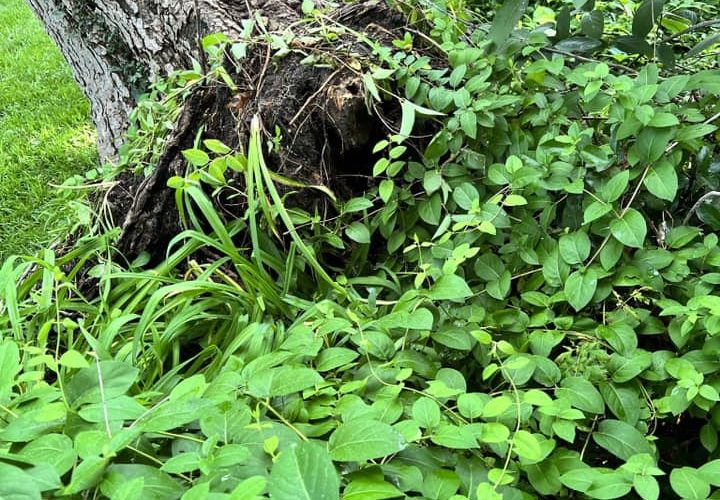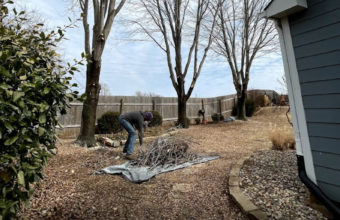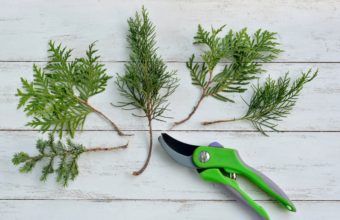Pruning lower branches of trees, also known as “limbing up” or “raising the canopy,” can improve clearance under the tree, enhance aesthetics, and reduce potential hazards.
Here are steps to properly prune lower branches…
- Gather the Necessary Tools:
- Pruning shears or loppers for smaller branches.
- Pruning saw for larger branches.
- Safety gear including gloves, safety glasses, and a helmet if necessary.
- Identify Which Branches to Remove – Carefully inspect the tree and identify the lower branches you want to prune. Focus on branches that are:
- Dead, diseased, or damaged.
- Rubbing against other branches.
- Blocking walkways, driveways, or obstructing visibility.
- Too low to the ground or interfering with structures.
- Determine the Appropriate Size for the Remaining Limbs – When deciding how high to prune, consider the tree’s natural form and the amount of clearance you desire. Avoid removing too many lower branches, as it can weaken the tree’s structure.
- Make Proper Cuts – To ensure a healthy healing process, make clean, precise cuts using the appropriate tool:
- For branches up to 1 inch in diameter, use pruning shears or loppers. Make cuts just outside the branch collar (the raised area where the branch attaches to the trunk).
- For larger branches, use a pruning saw. Make an undercut first about 6-12 inches away from the trunk, then make a top cut slightly further out. This will prevent the branch from tearing the bark as it falls.
- Avoid Tearing Bark – Be cautious when cutting to avoid tearing the tree’s bark, as this can create open wounds that may invite pests or diseases.
- Remove Branches in Sections (if necessary) – For large, heavy branches, it may be necessary to remove them in sections to prevent injury or damage. Make an initial cut partway through the branch from the underside, then make a final cut from the top, just outside the initial cut.
- Dispose of Branches Properly – Remove the pruned branches from the area, and dispose of them properly by chipping, composting, or recycling.
- Clean and Maintain Tools – After pruning, clean and disinfect your pruning tools to prevent the spread of disease between trees.
- Monitor the Tree’s Health – Keep an eye on the tree’s response to pruning. Ensure that wounds are healing properly and watch for any signs of stress or disease.
Do not remove too many lower branches, as they provide support and contribute to the overall health of the tree. Pruning should be done selectively and with care to maintain the tree’s balance and vitality. If you’re uncertain about the best approach to pruning lower branches or have concerns about a particular tree, consider consulting with a certified arborist or tree care professional for guidance.






